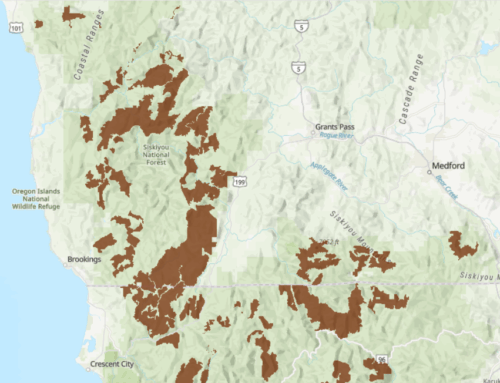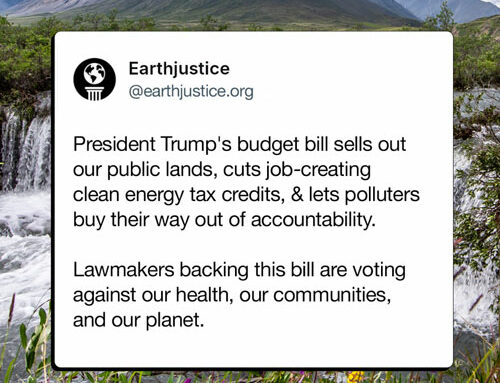The Conservation Column
By Pepper Trail
Good News, and Not-So-Good News
Climate change: Just about everything we do in conservation to protect birds and their habitats could be undone if climate change continues on its current path. Therefore, this Conservation Column focuses on two big climate change stories, one in Washington, and the other in Glasgow, Scotland.
Big News in Washington, DC
This month, at long last, the House of Representatives passed the $1 trillion Infrastructure Bill – which had passed the Senate earlier this summer – and also advanced the “Build Back Better” bill, which still needs Senate passage. “These bills are a turning point that puts the U.S. on a path toward a cleaner future for both people and wildlife,” said Marshall Johnson, acting chief conservation officer at the National Audubon Society. “Our science shows that birds are telling us that we need bold action now to ensure both their survival and ours. We recognize that there is still more to do to meet the challenge posed by a changing climate, but this legislation represents a critically necessary and significant step in the right direction.”
Both bills contain critical funds for a cleaner future. The Infrastructure Bill includes over $100 billion for public transit, electric vehicle charging stations, and updates to the electric grid, all of which will reduce use of fossil fuels. The Build Back Better Bill would have even greater—far greater—impacts on our climate future. In its current form, the bill is estimated to deliver well over one gigaton, or a billion metric tons, of greenhouse gas emissions reductions in 2030—at least ten times larger than any legislation Congress has ever passed. The framework’s $555 billion allocation would be the largest single investment in the clean energy economy in history, spanning buildings, transportation, industry, electricity, agriculture, and climate-smart practices. The framework will set the United States on course to meet its climate targets, achieving a 50-52% reduction in greenhouse gas emissions below 2005 levels in 2030. Of course, this bill still faces obstacles in the Senate, where some of these provisions could be weakened be-fore final passage.
Still, the two landmark bills contain important funding for initiatives that will curb carbon pollution, build the climate resilience of communities, and lay the foundation for cleaner energy systems. Provisions include:
• the extensions and expansions of clean energy tax credits, along with funding for electricity transmission and demonstrations of new technologies, which will drive significant emissions reductions in the power sector,
• investments in clean transportation technologies like batteries, charging stations, and green hydrogen that will help decarbonize the transportation sector,
• funding for orphaned well clean-up and a fee on methane emissions,
• funding for a Civilian Climate Corps, to mobilize the next generation of conservation and resilience workers,
• funding to build climate resilience through investments in coastal and water resilience, including response to drought, hurricanes and other extreme weather,
• canceling the oil and gas leasing program in the Arctic National Wildlife Refuge and nullifying existing leases,
• funding for climate-smart agriculture and forestry to support natural climate solutions.
“We look forward to ensuring that the programs in these bills are implemented as intended, and to continue to work to protect and restore natural landscapes that provide habitat to wildlife while also protecting communities from cli-mate threats like sea-level rise, flooding, drought, and wildfires,” said the National Audubon Society’s Johnson. “There is much work left to do, but the resources provided by these historic bills will help give us the momentum we need to make real progress against climate change.”
Meanwhile, in Glasgow…
The UN COP26 climate talks were held in Glasgow, Scotland in November. These meetings were billed as the last, best chance for the nations of the world to respond to the “code red for humanity” warnings contained in this summer’s report of the Intergovernmental Panel on Climate Change (IPCC), and commit to drastic reductions in greenhouse gas emissions.
The talks began with the urgent goal to “keep 1.5C alive,” referring to the temperature target of the Paris Agreement—what experts believe is the maximum amount of warming that would avoid catastrophic effects on natural and human environments.
The IPCC report suggested that current policies put us on course for a 2.7C temperature rise—and a world that would likely be incompatible with human civilization as we know it. While new commitments in Glasgow give hope that we can avoid that fate, unfortunately the most optimistic analysis suggest that the Cop26 summit bends the curve only to 1.8C—definitely still in the zone that would mean disastrous changes to world climate.
That leaves a gap that the deal seeks to narrow by requesting another round of national climate plans—both strong-er 2030 targets and long-term strategies—next year. The package makes incremental progress on how to cope with the impacts already brought by 1.1C warming and mobilize support for developing countries.
“We can say with credibility that we have kept 1.5C within reach but its pulse is weak,” said Cop26 president Alok Sharma as the conference closed. “It will only survive if we keep our promises, if we translate commitments into rapid action and if we deliver on the expectations set out in this Glasgow Climate Pact to increase ambition to 2030 and beyond.”
And back in Oregon…
Finally, on the local level, I took part in November’s virtual meeting of the Oregon Audubon Council (OAC), which set conservation priorities for 2022. I’ll report on the results of this meeting in the next Chat. And yes, climate change remains a top conservation priority for our state chapters and for National Audubon. Now, if we could just get the nations of the world to feel the same way…



Leave A Comment
You must be logged in to post a comment.